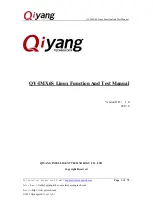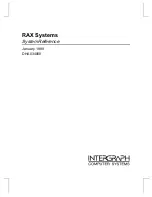
OLIMEX© 2017
A20-OLinuXino-LIME2 user's manual
CHAPTER 6: CONNECTORS AND PINOUT
6. Introduction to the chapter
In this chapter are presented the connectors that can be found on the board all together with their pinout
and notes about them. Jumpers functions are described. Notes and info on specific peripherals are
presented. Notes regarding the interfaces are given.
6.1 UART0 interface
The UART0 interface might be used for serial communication between the board and a personal computer
by default. In case of video output problem a cable might provide needed feedback and greatly reduce the
efforts needed to repair the board or to adjust the software setting.
Note that by default only UART0 is defined as a port suitable for serial debug. You can use our USB-
SERIAL-CABLE-F for debugging.
Consider table below when connecting the USB-SERIAL-CABLE-F according to the wire color code.
The RX line of the cable (GREEN wire) should go to TX line of the target board; the TX line of the cable
(RED wire) should go to the RX line of the target board. The BLUE wire should go to the target's GND
line.
UART0
Pin # Signal name
Processor pin
1 UART0-TX
A7
2 UART0-RX
B7
3 GND
-POWER CIRCUIT-
6.2 MicroSD card connector
The micro SD card slot is primarily used for booting the operating system.
The board works with micro SDHC cards up to 32GB of storage.
As a general precaution be careful with the SD cards you purchase. There is a big percentage of fake
cards due to the low effort required to counterfeit popular brands and the big demand for SD cards
worldwide. When in doubt – try the same operation with another card from another brand.
Olimex sells microSD cards with Linux or Android images, that have been tested – please refer to chapter
“2.2 Requirements”. Of course, if you already have a large enough microSD card you can download the
official Linux image from the wiki pages:
https://www.olimex.com/wiki/A20-OLinuXino-LIME2
When removing the card, please make sure that you release it from the connector by pushing and NOT by
pulling the card directly (this can damage both the connector and the microSD card).
6.2.1 SD/MMC1 slot
The schematic related to the SD/MMC (microSD connector) is located on the top of the board and the
Page 26 of 51







































